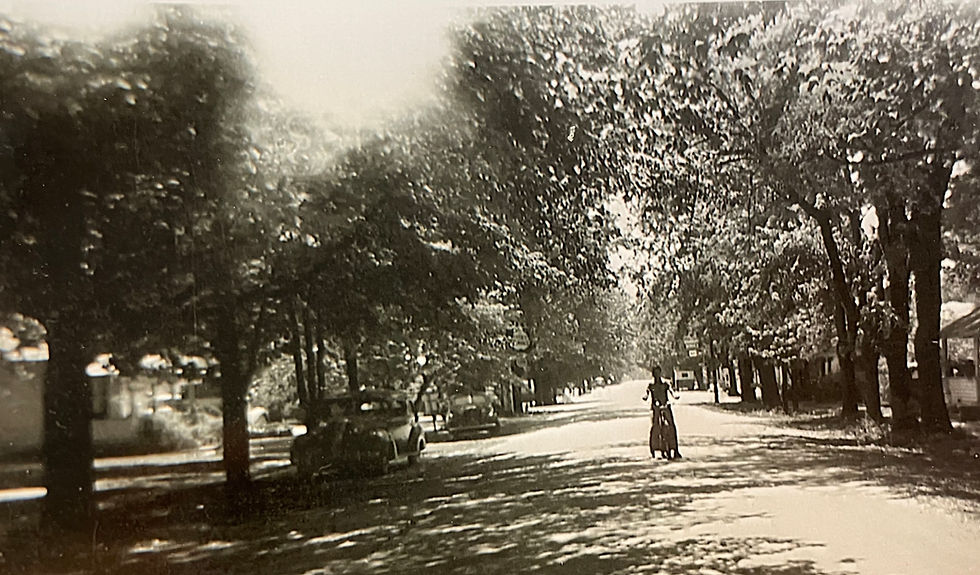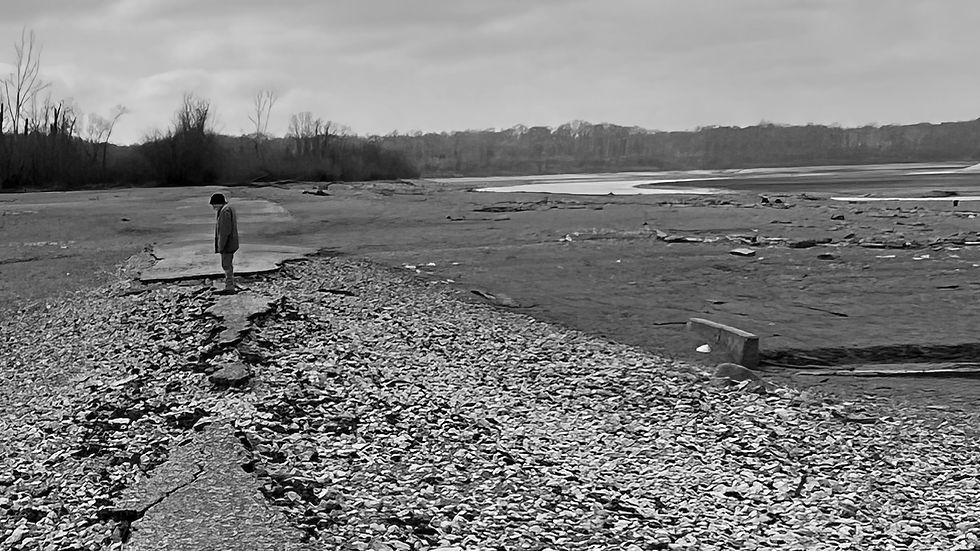Sanctity of Place
- Sid Shroyer
- Sep 17, 2024
- 2 min read

I’ve poked around down there from time to time over the years, past the “no trespassing” sign where old State Road 513 bends west, walking north down the hill on a road that fades into tracks and then disappears into the water. I’m looking for the place where a kid learns not to stick his hand in a lawn mower. Just once, God, let me slip through a crack in the universe. If I could find that house I’m thinking that the people I remember would be there, too.
That’s the last paragraph of my first WVPE Michiana Chronicle radio essay, from nine years ago. It was my audition for the part. The story of Dad’s home was the first story I had in mind to tell.
Five years later my son gave his son my father’s name. ‘A letter,’ I thought. ‘I’ll write the new Vern about Dad.’
The letter pulled me through the crack in the universe. A force of nature read to me the story I had struggled to find. I wrote it down.
That story is a now a book I’m calling When Once Destroyed. The title is a phrase from an 18th century poem called “The Deserted Village” by Oliver Goldsmith, about England’s colonial destruction of Ireland. I discovered the poem in a letter from a Huntington County farmer/educator/legislator to his Wabash County Fifth District Congressman about what he saw happening to their community in 1955.
But a bold peasantry, their country's pride
When once destroyed, can never be supplied.
It’s the sort of thing that happens all the time all over the world. My story is one example.
In it, a woman told me about a voice, “I know,” that saved her life. Then she said, “We stand on the shoulders of those who came before us.”
We owe them. It’s tragic that their way of life is gone.
In three years, I learned a lot about my father’s life and what happened to his community. I learned that what I ran away from 70 years ago had been forced upon my people. My place was destroyed as I was being born, and its people “planted,” like JD Vance would write in Hillbilly Elegy, “in the industrial powerhouses of the new America.” My objections to his treatise are many.
One of them: That a community becomes a subdivision is a sour metaphor for what has happened to America since the end of World War II. The insatiable appetite of the market turned its monster gaze on the unrealized potential of farmland, while professing a shared allegiance to the “traditional values” it undermined. The people of Somerset, Indiana watched their homes burned, their neighbors scattered, and their graves hauled, for the sake of a lie.
Our lives are not better. Value is not money.
Inevitability is the big lie that reduces eight billion stories to one. The inevitability in the conventional wisdom narrative of history omits the details. The details reveal that what happened didn’t have to. I found a lot of details.
One of them: My grandmother’s grave and 7,000 more in the Upper Wabash Valley Flood Control Project path were not moved respectfully. The sanctity of their place was destroyed.
Look for When Once Destroyed around April 2025.





Comments